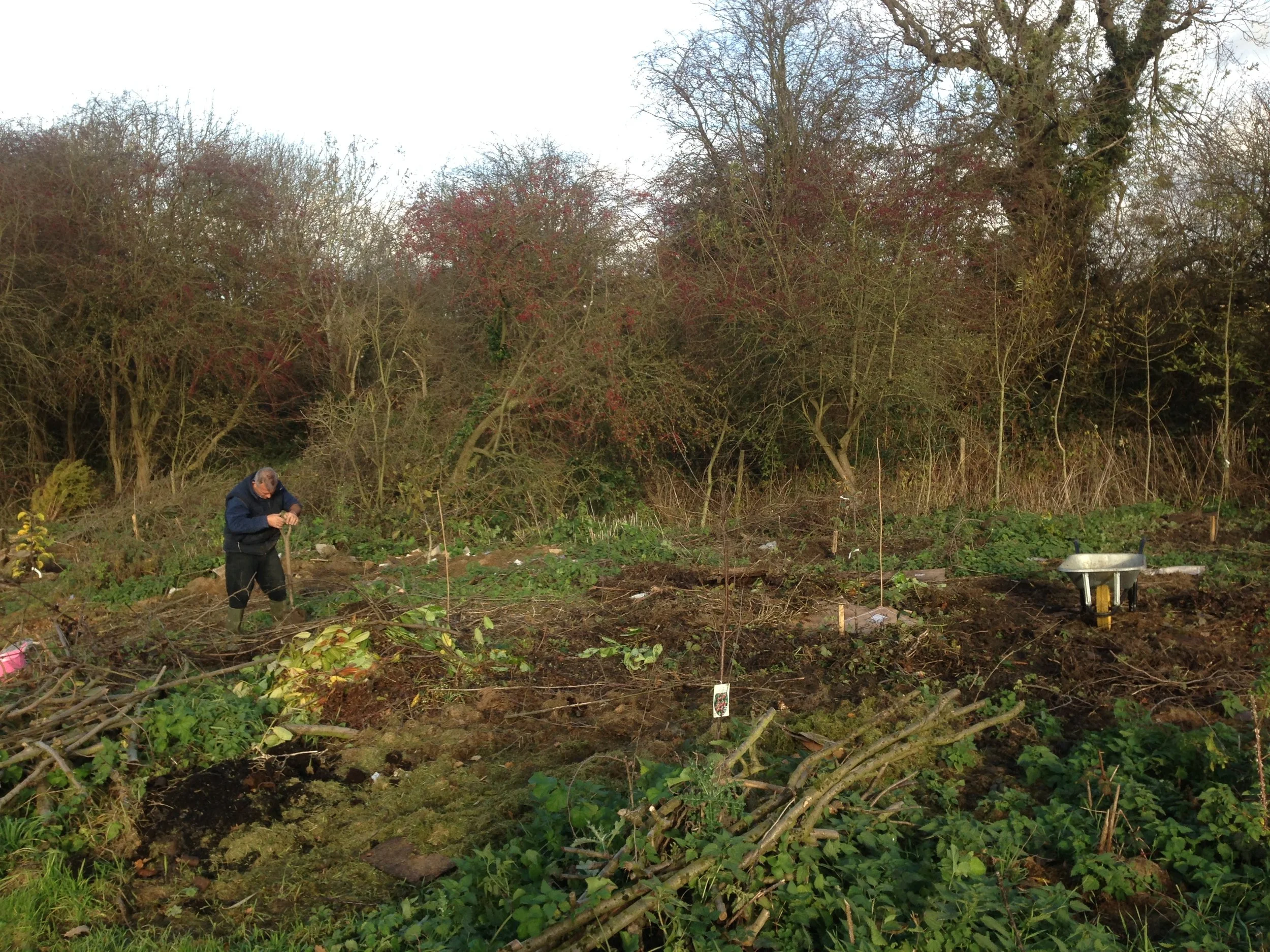Developing our Forest Garden in NE Derbyshire
This piece is the start of an account detailing the establishment of a forest garden in NE Derbyshire. Starting in 2016 it’s the journey so far, how it’s been achieved and what we are producing in terms of harvests.
I will focus now and then on specific plant species and techniques such as grafting, propagating as well as how to turn the crops into delicious meals and refreshing drinks (both alcoholic and not so alcoholic).
Clearing the area in spring 2016 with initial tree planting.
So what is a Forest Garden. It is well described by Martin Crawford from whom I have gained a lot of inspiration. He established a forest garden in Darlington, South Devon in 1994. In his book “Creating a Forest Garden” he describes the system as:
“A forest garden is a garden modelled on the structure of a young natural woodland, utilising plants of direct and indirect benefit to people – often edible plants. It may contain large trees, small trees, shrubs, herbaceous perennials, herbs, annuals, root crops and climbers, all planted in such a way as to maximise positive interactions, with fertility maintained largely or wholly by the plants themselves”.
A starting point for his work is at: https://www.agroforestry.co.uk
The Forest Garden on 4th September 2022 taken from the same position as the picture above showing how quickly it has established.
My motivation to start my own forest garden was to create a self-sustaining environment able to produce a wide variety of food and other useful crops in as many months as possible. I had previously tended an allotment and had found the raising of tender annual crops to be a labour of love and very hard work. I became more interested in perennial growing, the principle of no dig as expounded by Charles Dowding and the prospect of something which in time could look after itself was appealing.
I started in March 2016 with an area of the garden which was completely over grown and with very poor soil across most of it. The area when I paced it out was roughly 26m wide running down hill for 40m towards the River Drone and facing North West. It is well sheltered by large trees and scrub to the north but is exposed to wind from the West. This aspect means that it does not have the maximum benefit of the sun but so far this does not seem to have created issues. Whats more problematic is that it seems to hold frost as it moves down towards the river creating frost pockets and affecting plants in the Spring.
Although its only been six years the transformation is already quite dramatic with the area being full of life, developing trees and understorey plants and bushes along with significant harvests of food already.
Rajka apples - 3rd September 2022. This tree planted in 2016 has now had three years of good harvests with no sign so far of disease.
In the next piece I will look at how we undertook the clearing of the area and established the initial framework of planting.



